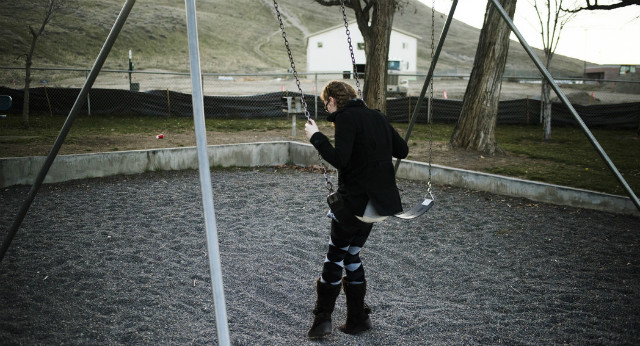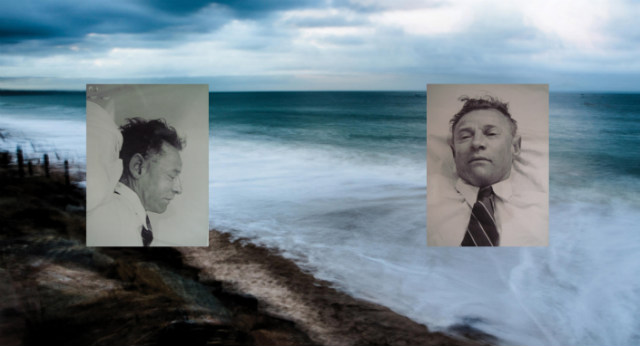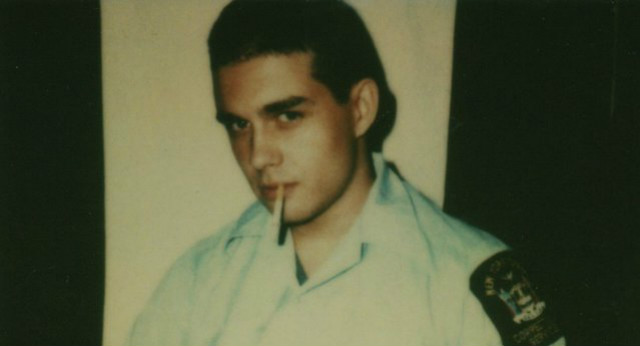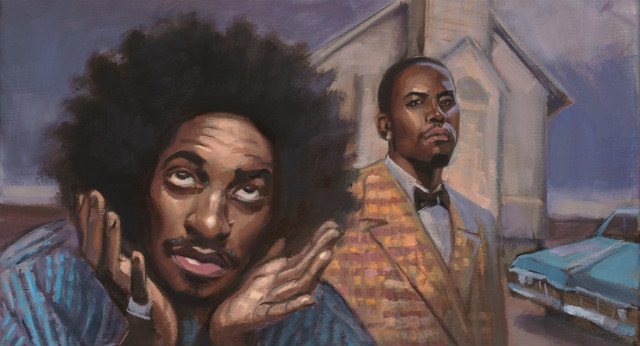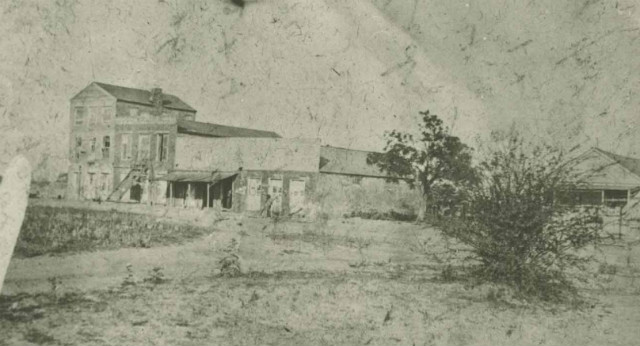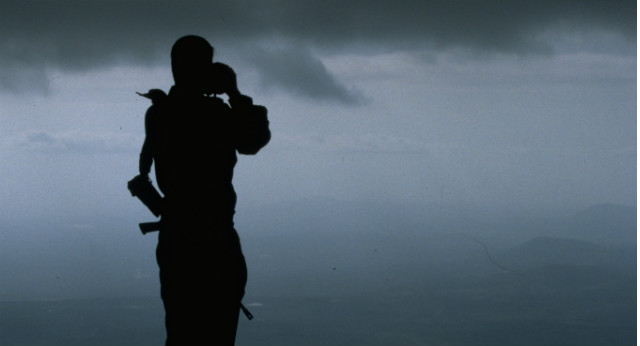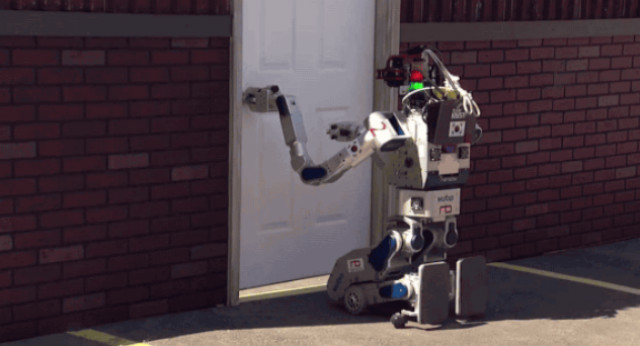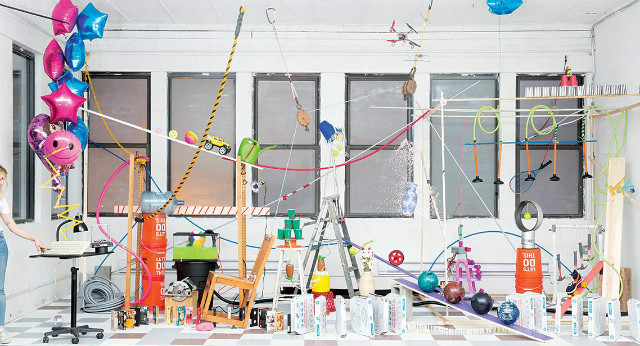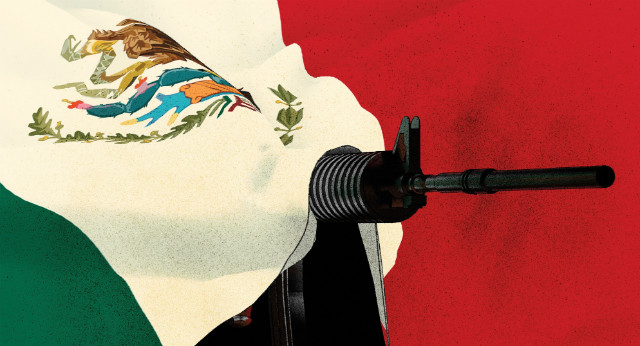Ms. Fitness USA
Tuesday, December 29, 2015
Basic filmmaking tutorial, "RoadHouse".
One of the biggest problems most first-time filmmakers face is that of planning for – and providing – the right resources for the all-important shoot. You’ve written the script, or found someone to write it for you. You’ve found a cast, and you’ve arranged a day (or days) on which to shoot. And you’ve raised a budget that will allow you to make a film without also serving up a significant dent to your personal bank balance.
But now what? Part of your budget will be put down to equipment costs – either renting or purchasing the hardware needed to turn the inputs of light and sound into a movie. There’s a bewildering array of equipment available in both the amateur and professional filmmaking markets, to hire or to buy, and choosing the right kit for your shoot can be stressful, confusing and, when done wrong, a disaster for both your film and your budget. Just as important is your crew: filming will prove just as slow and frustrating with an overload of extraneous team members as it will if there are too few to keep the ball rolling.
This handy cut-out-and-keep (over several fridges or in a filing cabinet or something) guide will take you through three levels of equipment and crew that should be present on your film set. Starting with the very, very basic needs of what is essentially a no-budget shoot, we’ll progress up until we have makings of a professional indie film set-up. We've even included handy links to Amazon, where you can find some of the coolest and most useful pieces of kit and gadgets!
One thing this guide does not account for are the pre- and post- production costs, such as ADR, colour correction, editing etc, which should always be taken into account in your budget. It also ignores the salaries of cast and crew. In time-honoured independent film fashion, everyone on these fictional shoots of mine is working for free, and they love it. It's not ideal – you definitely want to be paying people to keep this industry alive – but it is where many of us start out. Plus, paying people is good for you too - “pay peanuts, get monkeys”.
A word of warning: as with most arts how-to articles, this article is as much an opinion piece as it is a guide. Please treat it as such.
No, I have no money at all, not even a little bit
(OK, I have a little bit)
The Kit
Visuals
• A Middle-range DSLR Camera. Most shoot 1080p, will go to 6400 ISO, are comparatively really cheap and can double up as useful stills cameras.
• Proper digital storage for the film! It’s amazing how few people think of this until the first day of the shoot when the camera stops recording after 20 seconds. Get multiple Class 10 or over SD cards with respectable amounts of memory (16 GB at least). Better still, opt for a portable hard drive that will plug into your camera.
• A Prime Lens. Do it properly. Zooming in is sinful. Stop being lazy and move the camera closer instead. Go for something like a 50mm, which sees more or less a similar view to what the human eye sees, so is relatable and good for all sorts of shots.
• A Tripod / Monopod. Essential for steadying your shots, whether you have the space or not.
• A home-made bounce board or DYI Lighting kit. Bounce boards are spectacularly simple to make: a wooden / plastic frame with an opaque white surface stretched across it will do. A DIY lighting kit, similarly, can consist of nothing more than a few house lamps – the important thing is being able to have the choice to use it, and not being stuck with whatever nature throws at you.
• Proper digital storage for the film! It’s amazing how few people think of this until the first day of the shoot when the camera stops recording after 20 seconds. Get multiple Class 10 or over SD cards with respectable amounts of memory (16 GB at least). Better still, opt for a portable hard drive that will plug into your camera.
• A Prime Lens. Do it properly. Zooming in is sinful. Stop being lazy and move the camera closer instead. Go for something like a 50mm, which sees more or less a similar view to what the human eye sees, so is relatable and good for all sorts of shots.
• A Tripod / Monopod. Essential for steadying your shots, whether you have the space or not.
• A home-made bounce board or DYI Lighting kit. Bounce boards are spectacularly simple to make: a wooden / plastic frame with an opaque white surface stretched across it will do. A DIY lighting kit, similarly, can consist of nothing more than a few house lamps – the important thing is being able to have the choice to use it, and not being stuck with whatever nature throws at you.
Audio
• A Directional Microphone. Also known as a Shotgun Mic, this piece of equipment could potentially save your entire film if used correctly. Getting the sound capture right is one of the most important aspects of filmmaking.
• Additional microphone equipment. This means extension XLR cables and adaptors. DSLRs don’t take XLR, so you’ll either need to find an adaptor for your camera’s microphone input (normally a mini-Jack).
• Additional microphone equipment. This means extension XLR cables and adaptors. DSLRs don’t take XLR, so you’ll either need to find an adaptor for your camera’s microphone input (normally a mini-Jack).
Lastly, there is a vital component of any film set that is scientifically proven to make the final product look more smooth and professional: a dolly. Granted, dollies and track kits are expensive even to rent, but who says you need to rent or buy one? As with our lighting kit earlier, it’s fairly easy to achieve a smooth tracking shot using stuff you pick up here and there for free. Anything with wheels (bicycle, skateboard, wheelchair) can be used, so long as the surface it’s rolling on is nice and flat. And have you seen the Pico-Dolly? It’s a genius, cheap solution to all your smooth-shot needs.
You can even try something without wheels: Elliot Grove once achieved one of his favourite-ever shots by dragging a camera on a leather jacket across a marble floor.
The Crew
• Director / Cameraman / DoP – A dazzlingly multi-tasking role, but folding the director’s job in with the cinematographer’s and the camera operator’s is a good way of keeping the amount of people on the set down, as well as the budget. It also allows the artistic vision and decisions to stay with one person, making things simpler in your first shoot.
• Producer – Many small-scale productions (especially if the film being shot is a short) will combine the Director and Producer into one role. Although this is possible, you’ll probably find that on the day organizing all the actors, equipment and locations is a bit overwhelming. Let the producer worry about organization, you worry about the film.
• Sound / Lighting / General handyman – While the Director and Producer are busy with the artistic vision and organization of the shoot, this member of the team will provide vital support by acting as a runner, boom mic operator, backup cameraman, script supervisor, gaffer, and all those other myriad jobs that make moviemaking possible.
• Actors (up to 5) – As aforementioned, it is important that you keep the number of unnecessary people on your set to a minimum. For your first project, pick or write a script with as few characters as possible. Remember, being an actor on-set is mostly a boring, irritating experience, especially when you’re not being paid or fed, so reduce the amount of people you’re going to be looking after for a more relaxed experience.
• Producer – Many small-scale productions (especially if the film being shot is a short) will combine the Director and Producer into one role. Although this is possible, you’ll probably find that on the day organizing all the actors, equipment and locations is a bit overwhelming. Let the producer worry about organization, you worry about the film.
• Sound / Lighting / General handyman – While the Director and Producer are busy with the artistic vision and organization of the shoot, this member of the team will provide vital support by acting as a runner, boom mic operator, backup cameraman, script supervisor, gaffer, and all those other myriad jobs that make moviemaking possible.
• Actors (up to 5) – As aforementioned, it is important that you keep the number of unnecessary people on your set to a minimum. For your first project, pick or write a script with as few characters as possible. Remember, being an actor on-set is mostly a boring, irritating experience, especially when you’re not being paid or fed, so reduce the amount of people you’re going to be looking after for a more relaxed experience.
Oh, look, found some money
The Kit
Visuals
• High-range DSLR / Low-range Film camera - If you’ve got a bit of money to spare, go for a higher-quality DSLR, or look at buying or renting a camera exclusively for film such as a C300, Blackmagic, etc…
• Storage – A portable hard-drive, compatible with your camera’s memory output.
• Monitor – Simply a screen linked to your camera, so you can watch what is being filmed live without having to crane into the viewfinder. Very useful if you’re not shooting yourself, and very cheap and easy to set up and find. Remember, you’ll have to get the right cables too!
• 50mm Prime lens – Again, your main and most useful lens, appropriate for all sorts of styles and shots.
• Telephoto lens – The most popular length is the 70-200mm. This lens will allow you to become a bit more experimental with camera placement, such as with outdoor shots and flattening the background.
• A small professional Lighting kit featuring at least one bounce board, a couple of fill lights, a pick or two, gels and stands.
• A Tripod.
• A Shoulder rig. Since you have the budget, invest in a good piece of equipment for shooting on the move. You’re still not quite in proper Steadicam territory, but a Fig Rig or entry-level counterweight system could be in your price range and very useful.
• Storage – A portable hard-drive, compatible with your camera’s memory output.
• Monitor – Simply a screen linked to your camera, so you can watch what is being filmed live without having to crane into the viewfinder. Very useful if you’re not shooting yourself, and very cheap and easy to set up and find. Remember, you’ll have to get the right cables too!
• 50mm Prime lens – Again, your main and most useful lens, appropriate for all sorts of styles and shots.
• Telephoto lens – The most popular length is the 70-200mm. This lens will allow you to become a bit more experimental with camera placement, such as with outdoor shots and flattening the background.
• A small professional Lighting kit featuring at least one bounce board, a couple of fill lights, a pick or two, gels and stands.
• A Tripod.
• A Shoulder rig. Since you have the budget, invest in a good piece of equipment for shooting on the move. You’re still not quite in proper Steadicam territory, but a Fig Rig or entry-level counterweight system could be in your price range and very useful.
Audio
• Shotgun mic, with all the extension cables, adaptors and the boom and an external sound recorder.
With a higher budget, you can begin to look at different ways of mic-ing actors up. Although none should be used as a permanent alternative to a good shotgun microphone, body mics and ambient mics are useful for capturing intimate sound in difficult scenes or the general aural atmosphere of a location. The external device is always preferable to connecting the microphone directly to the camera, as it will provide a much better sound quality and can be carried around by the sound man, avoiding cable mix-ups and difficult set-ups.
Again, now we’ve taken a step up the budget ladder, we can begin to look at more professional solutions to certain problems. As opposed to a skateboard or a coat being dragged across the floor, you can now afford to hire a small (but still professional) track and dolly kit. This should come with a proper fitting for a tripod (or a even a tripod of it’s own!), a set of tracks and well-made rollers, so that the camera movement is as smooth as possible. The massive advantage of having a track is the ability to lay it down on practically any surface, and still achieve a fluid motion.
The Crew
• Director / DoP - This time around the Director has the massive advantage of not having to operate the camera at the same time, so he can focus solely on directing the actors and camera operator.
• Producer – Tasked with organizing the set on the day of the shoot, as well as all their other pre- and post-production responsibilities.
• Camera operator / 2nd DoP / Lighting technician – Make sure you find someone who knows about photography, camera placement, etc. Not only will they be much easier to work with than someone new to the game, but they will probably come up with ideas on-set that you hadn’t previously considered.
• Sound technician – An experienced sound technician, proficient at both sound capture and boom placement, will make all the difference to your movie soundtrack’s quality.
• General set handyman (Runner) – Someone needs to push the dolly and carry the bags around, as well as take over everyone else’s job when they’re too busy!
• Actors (up to 5)
• Producer – Tasked with organizing the set on the day of the shoot, as well as all their other pre- and post-production responsibilities.
• Camera operator / 2nd DoP / Lighting technician – Make sure you find someone who knows about photography, camera placement, etc. Not only will they be much easier to work with than someone new to the game, but they will probably come up with ideas on-set that you hadn’t previously considered.
• Sound technician – An experienced sound technician, proficient at both sound capture and boom placement, will make all the difference to your movie soundtrack’s quality.
• General set handyman (Runner) – Someone needs to push the dolly and carry the bags around, as well as take over everyone else’s job when they’re too busy!
• Actors (up to 5)
Take my money, I don't want it
So. Somehow, through begging, borrowing and stealing, depriving your parents of their retirement fund or yourself of food for a few months (or years), you’ve managed to raise a respectable budget for a respectable film shoot.
At this point, you get to become more experimental with your script and directorial choices. Doors which were previously closed – Steadicam technology, cranes, scenes in difficult or far-away locations – are suddenly opened.
The Kit
Visuals
• 2 x Cameras - TWO?! Yes, two. Three is probably an exaggeration, but being able to capture a scene from a couple of different angles simultaneously, or even shoot different scenes at different locations at the same time, is a massive advantage. At this level we can begin to look at proper professional cameras (more for hire than to buy) such as a RED or an Arri Alexa – or even a combination of a pro film camera and a high-range DSLR, Slumdog Millionaire style.
• 2 x external hard drives for storage, to go with our two cameras.
• A full set of Prime lenses, from 11mm through to 200mm or so. This covers practically the whole range and will give your DoP a great set of options to play with – although if you’re planning on using a zoom function for a trick shot (such as a contrazoom), you’ll need to source yourself a Zoom lens.
• Tripods, Monopods, Tracks, a Dolly, and, if you’re feeling really adventurous, a jib or crane.
• A couple of handheld systems – Depending on the script, you might need to have some camera movement that cannot be done on tracks. To do this, you can use a variety of handheld camera systems, from the very cheap and rudimentary Fig Rig to the very expensive, very complicated Steadyicam systems, which often come with their own operators.
• Professional Lighting kit with floods and spots for general lighting effects, picks for highlighting, and gels and stands to get the right colours and angles. Before you buy, however, have a chat with your DoP and see what they suggest.
• 2 x external hard drives for storage, to go with our two cameras.
• A full set of Prime lenses, from 11mm through to 200mm or so. This covers practically the whole range and will give your DoP a great set of options to play with – although if you’re planning on using a zoom function for a trick shot (such as a contrazoom), you’ll need to source yourself a Zoom lens.
• Tripods, Monopods, Tracks, a Dolly, and, if you’re feeling really adventurous, a jib or crane.
• A couple of handheld systems – Depending on the script, you might need to have some camera movement that cannot be done on tracks. To do this, you can use a variety of handheld camera systems, from the very cheap and rudimentary Fig Rig to the very expensive, very complicated Steadyicam systems, which often come with their own operators.
• Professional Lighting kit with floods and spots for general lighting effects, picks for highlighting, and gels and stands to get the right colours and angles. Before you buy, however, have a chat with your DoP and see what they suggest.
Audio
• 2 x Shotgun mics with cables, booms, external recorders.
• 1 x ambient mic with cables, stand, external recorder.
• A couple of body mics – Once again, depending on the script. Body mics are mostly used in shots too wide for a microphone on a boom and come with their own set of issues, namely the excess noise caused by the microphone rubbing on clothing.
• 1 x ambient mic with cables, stand, external recorder.
• A couple of body mics – Once again, depending on the script. Body mics are mostly used in shots too wide for a microphone on a boom and come with their own set of issues, namely the excess noise caused by the microphone rubbing on clothing.
A good idea would be to speak to your Sound engineer and see what they need. Although the above will do for most shoots, they might need a specialist piece of equipment you haven’t heard of before, or didn’t think to include in the initial list.
The Crew
• Director – purely responsible for the artistic direction of the shoot.
• Assistant Director – This person will be in charge of the people on your set – and since you’re in charge of the crew, who will be busy most of the time, this means they’re in charge of organising the actors. Although we say ‘in charge’, an old phrase about herding cats comes to mind – so be nice to the AD, for they have a horrible job.
• Producer – The higher the budget, the more everyone’s responsibilities start looking like what they’re supposed to be. In this shoot, the producer will be responsible for organizing and scheduling locations, crew and equipment, but has some minions (such as the AD and the handymen) to help him out. The producer should also be responsible for making sure none of the kit gets damaged or lost.
• Camera operator / DoP – One of the most common pieces of advice to first-time feature filmmakers is to hire a proper Director of Photography. They need to be trained and they need to have experience working on film sets before. You can still direct the camera from the monitor (this sounds needy), but their expertise will make the whole process seem a lot easier and more creative.
• Sound engineer – Preferably someone experienced in working in sound recording, with good microphone placement knowledge and a good ear. They do not have to constantly operate the boom themselves, but do have to pay close attention to the type and quality of sound being captured. There are many sound engineers with the skills to do the job well working in the theatre who rarely get a chance to be on a film set, so widen the breadth of your search to outside the film world.
• Lighting technician / Gaffer – Again, you’re better off erring on the side of experience and hiring someone who has worked with lighting systems before; and again, this tends to be a domain in which theatre technicians can be an extremely creative and experienced pool of talent. Many DoPs however, will also know or be used to working with their own Lighting Technicians.
• Runners – Your precious little minions. You will probably have no problem finding some people to do this for free, but bear in mind that on your shoot, their duties will be more than just fetching the tea. They will be assisting not only the Producer, but also the Lighting Technician, the Sound Engineer, the DoP the Actors and, of course, you, not to mention carrying all the kit and pushing the dolly and laying out the tracks and tidying the set and keeping the equipment safe. Precious, precious minions.
• Actors – Clearly, the amount of actors you have on set will depend on the amount of actors featured in the script, but with a higher budget you can afford to take on films with multiple speaking parts, as you have your AD to look after the actors between takes.
• Assistant Director – This person will be in charge of the people on your set – and since you’re in charge of the crew, who will be busy most of the time, this means they’re in charge of organising the actors. Although we say ‘in charge’, an old phrase about herding cats comes to mind – so be nice to the AD, for they have a horrible job.
• Producer – The higher the budget, the more everyone’s responsibilities start looking like what they’re supposed to be. In this shoot, the producer will be responsible for organizing and scheduling locations, crew and equipment, but has some minions (such as the AD and the handymen) to help him out. The producer should also be responsible for making sure none of the kit gets damaged or lost.
• Camera operator / DoP – One of the most common pieces of advice to first-time feature filmmakers is to hire a proper Director of Photography. They need to be trained and they need to have experience working on film sets before. You can still direct the camera from the monitor (this sounds needy), but their expertise will make the whole process seem a lot easier and more creative.
• Sound engineer – Preferably someone experienced in working in sound recording, with good microphone placement knowledge and a good ear. They do not have to constantly operate the boom themselves, but do have to pay close attention to the type and quality of sound being captured. There are many sound engineers with the skills to do the job well working in the theatre who rarely get a chance to be on a film set, so widen the breadth of your search to outside the film world.
• Lighting technician / Gaffer – Again, you’re better off erring on the side of experience and hiring someone who has worked with lighting systems before; and again, this tends to be a domain in which theatre technicians can be an extremely creative and experienced pool of talent. Many DoPs however, will also know or be used to working with their own Lighting Technicians.
• Runners – Your precious little minions. You will probably have no problem finding some people to do this for free, but bear in mind that on your shoot, their duties will be more than just fetching the tea. They will be assisting not only the Producer, but also the Lighting Technician, the Sound Engineer, the DoP the Actors and, of course, you, not to mention carrying all the kit and pushing the dolly and laying out the tracks and tidying the set and keeping the equipment safe. Precious, precious minions.
• Actors – Clearly, the amount of actors you have on set will depend on the amount of actors featured in the script, but with a higher budget you can afford to take on films with multiple speaking parts, as you have your AD to look after the actors between takes.
There’s one filmmaking post-script that needs to be addressed, and is directed to all three levels of filmmaking above, as well as practically every other level of filmmaking there is. In any shoot, there are two vital components that will make your life as a filmmaker easier by several thousand degrees. The first is a place to store and transport your equipment, preferably at the same time. This means either a car or, even better, a van.
The second is a ready supply of electricity: as you might remember, nearly everything on a film set needs those little blue sparks to function, from the microphones to the camera to your tired, tired brain. Don’t get caught out, scout out your locations first and if there are no/not enough mains plugs bring along a generator.
Oh, also this thing.
That brings us to the end of this incredibly long guide. I hope you’ve cut-out-and-kept! And that you haven’t run out of glue or scissor-metal.
How to Get Out of Debt: A Step-by-Step Guide

To get out of debt, you need a plan, and you need to execute that plan. But that can be easier said than done. It’s easy to become overwhelmed with all the steps you need to take. And it’s also easy to lose motivation if you don’t realize how much progress you’ve already made.
You’ll need to make all necessary adjustments to your budget along the way so you don’t overspend and slide back into debt. Plus, if you don’t have an emergency fund, consider setting some money aside in savings before you get started on your plan.
To help you get started — and then stay on track — we’ve created this simple get-out-of-debt checklist. Keep it someplace where you’ll see it often, and make it your goal to check a task off the list each day (or each week), depending on how quickly you want to become debt-free.
Get Prepared to Get Out of Debt
If you want to do this right, you want to make sure that you know where you stand before you start. You need to have a complete picture. Here’s what you need to do.
- Gather your most recent statements for all loans and credit cards.
- Get your free annual credit reports to check them for accuracy and to identify all debts.
- Get your free credit score at Credit.com to find out whether you can lower your rates.
- Check the National Student Data System to gather all student loan information.
Make A List
Having everything written out in front of you is really the key to success here. Plus, once you’ve written it all out, and it’s right there in black and white, it may not seem as insurmountable as it did before.
- Make a list of all your debts: name of creditor, interest rate, balance, minimum monthly payment.
- Also list the three-year payment for each debt, as found on credit card statements.
- Remember to include loans not listed on your credit reports (e.g. family loans, medical bills).
Lower Your Rates
Paying high interest rates on existing debt causes your debt to really mount up, and makes paying it off much more difficult. If possible, you want to lower those interest rates. Here’s what to do:
- Based on your credit, you may qualify for much better interest rates on credit cards.
Open a free account with Credit.com and see what kind of low rate balance transfer credit cards you can get. - Check out student loan consolidation and Income-based Repayment at StudentLoans.gov.
- Call your card issuers to ask for lower rates on credit card balances.
- Consider a consolidation loan and/or balance transfers to pay off high-rate credit cards.
- Find out if you can refinance a high-rate auto loan.
Get Your Number
Once you know what your total payoff number is, you’ll have a real, complete goal to work towards.
- Total the three-year pay-off amount for all your credit cards.
- Add the monthly payments for all other debts.
- Write down the result: Your Total Monthly Payment.
Plan Your Strategy
There are plenty of ways to attack this problem and you’ll likely approach this using a variety of tools and methods. Plan your strategy carefully.
Complete step by step > https://www.credit.com/debt/get-out-of-debt/
Monday, December 28, 2015
Changing the Game
FOR TEAMS
We deliver software to the most forward-thinking organizations in professional basketball, football and soccer. Nearly half of NBA teams utilize Second Spectrum’s Eagle platform to deliver their data, analytics, visualization and video solutions. We enable teams with key insights that inform strategic decisions. We deliver what coaches and front offices want to know, by equipping them with the tools to win.
FOR MEDIA
We have created revolutionary products for visual storytelling, both for broadcast and digital platforms. One of those products, DataFX, integrates statistics and special effects to create new video and digital content. Our Storyboard product is an interactive touchscreen software that enables innovative ways to breakdown and explain stories. Our media products have been used across major outlets, such as ESPN and FOX Sports.
WE ARE A FULL-STACK SOLUTION.
In the data-driven world of sports, we can collect, curate, evaluate, manage, transform, analyze, learn, visualize, interact and integrate with video and design to create new and compelling content, stories and software.
Must see > http://www.secondspectrum.com/#process
YBCA
Youth basketball coach education, coaching clinics and certification programs
Artificial intelligence, deep learning, and skill development
I have compared parents and coaches attempting to control the every movement of their children on a basketball court or soccer field to fantasy football. On Twitter, Innovate FC gave this type of behavior a more eloquent name: Playstation coaching. An article about robots and artificial intelligence provided another metaphor.
In basketball, we cannot program every response on the court. Instead, we have to learn to solve problems. Therefore, practice should expose players to problem solving in order to develop this skill, rather than trying to pre-program every potential response to every potential scenario. Playstation coaches attempt to imagine every scenario and teach a play (response) to each scenario. Therefore, they have man offenses, underneath OB plays, sideline OB plays, zone offense vs a 2-3, zone offense vs a 3-2, zone offense vs a 1-3-1, press breaks vs man, 1-2-1-1, 2-2-1, 2-1-2, 2-1-1-1, etc. They spend every moment pre-programming these responses, but in a game, when something is slightly different than expected, the players do not know what to do. They cannot adapt because they have never solved problems on their own; they have never really learned. They have been programmed.
By Brian McCormick, PhD
Director of Coaching, Playmakers Basketball Development League
Author, The 21st Century Basketball Practice and Fake Fundamentals
“Most robotic applications are in controlled environments, where objects are in predictable positions,” says UC Berkeley faculty member Trevor Darrell, who is leading the project with Abbeel. “The challenge of putting robots into real-life settings, like homes or offices, is that those environments are constantly changing. The robot must be able to perceive and adapt to its surroundings.”This parallels the current discussion about constraints-led coaching. Most practice drills are in controlled environments, where objects are in predictable positions. The challenge of putting playersinto real game settings is that those environments are constantly changing. The player must be able to perceive and adapt to its surroundings.
Conventional, but impractical, approaches to helping a robot make its way through a 3D world include pre-programming it to handle the vast range of possible scenarios or creating simulated environments within which the robot operates.What are plays if not a conventional, but impractical approach to helping players make their way through a game environment? Again, it is not that plays are wrong, but the attitude of “run the play” even when not running the play or deviating from the play leads to a better alternative.
Instead, the researchers turned to a new branch of AI known as deep learning. This is loosely inspired by the neural circuitry of the human brain when it perceives and interacts with the world.We learn through experience and other humans, but this learning is not like programming a computer, or robot, because we have to adapt our experience or someone’s instructions to constantly changing environments. When we learn to do math, we do not practice every possible math problem; instead, we learn the basics, and we learn to solve problems that are changing constantly.
“For all our versatility, humans are not born with a repertoire of behaviours that can be deployed like a Swiss army knife, and we do not need to be programmed,” explains postdoctoral researcher Sergey Levine, a member of the research team. “Instead, we learn new skills over the course of our life from experience and from other humans. This learning process is so deeply rooted in our nervous system, that we cannot even communicate to another person precisely how the resulting skill should be executed. We can at best hope to offer pointers and guidance as they learn it on their own.”
In basketball, we cannot program every response on the court. Instead, we have to learn to solve problems. Therefore, practice should expose players to problem solving in order to develop this skill, rather than trying to pre-program every potential response to every potential scenario. Playstation coaches attempt to imagine every scenario and teach a play (response) to each scenario. Therefore, they have man offenses, underneath OB plays, sideline OB plays, zone offense vs a 2-3, zone offense vs a 3-2, zone offense vs a 1-3-1, press breaks vs man, 1-2-1-1, 2-2-1, 2-1-2, 2-1-1-1, etc. They spend every moment pre-programming these responses, but in a game, when something is slightly different than expected, the players do not know what to do. They cannot adapt because they have never solved problems on their own; they have never really learned. They have been programmed.
By Brian McCormick, PhD
Director of Coaching, Playmakers Basketball Development League
Author, The 21st Century Basketball Practice and Fake Fundamentals
Related Posts via Taxonomies
- Learning vs. following directions
- Self-discovery in youth sports development
- Developing a Skill: Training like a College Player
- Why do we use drills?
- Games, drills, and instruction
- Basketball skill trainers, creativity, and following directions
- Train like a Pro
- Testing (Playing Games) as a Means of Learning
- Thaddeus Young, Jrue Holiday and the Adaptability of Learning
- Indecision with the ball
This entry was posted on Thursday, September 17th, 2015 at 6:21 AM and is filed under Athlete Learning. You can follow any responses to this entry through the RSS 2.0 feed. You can leave a response, or trackback from your own site.
Full > http://learntocoachbasketball.com/artificial-intelligence-deep-learning-and-skill-development
Sunday, December 27, 2015
Land of the Polar Bears
A high Arctic archipelago situated between Norway and the North Pole, Svalbard is a place of deep fjords, snow-capped mountains, massive sheets of ice, and magnificent polar bears. Travel under the midnight sun aboard the National Geographic Explorer and experience nature in its purest form.
Trip Highlights
- Search for the very symbol of the Arctic—the polar bear—and observe these majestic creatures in their natural habitat.
- Take naturalist-led shore walks, and cruise among beautiful passing icebergs in a Zodiac or a kayak.
- Experience the legendary midnight sun: the ethereal light of the northern summer, when the sun never sets.
- Watch for huge walruses, bearded and ringed seals, arctic foxes, and reindeer.
Itinerary - 11 Days
Days 1 & 2 — U.S./Oslo, Norway
Depart on an overnight flight to Oslo. Upon arrival, check into our hotel. On an afternoon tour of this charming city, stroll among the famed Vigeland sculptures—hundreds of life-size human figures set in terraced parklands. Visit the Fram Museum, showcasing the polar ship Fram and dedicated to one of the explorers and wooden vessels that navigated the Arctic Sea in the late 1800s and early 1900s. This evening is free to explore Oslo on your own from the Thon Hotel Bristol.
Day 3 — Oslo/Longyearbyen
Depart Oslo on a private charter flight, and enjoy breathtaking vistas en route to Longyearbyen. Embark the National Geographic Explorer, your base for the next six days.
(B,L,D)
(B,L,D)
Days 4 through 9 — Exploring Svalbard
This voyage is undertaken in the spirit of discovery, and our travel in the archipelago is exploratory by design. In a region ruled not by humans but by polar bears, we let nature guide our course. Svalbard lies north of the Arctic Circle, where the summer midnight sun never sets. With our fully stabilized ice-class expedition ship, we are able to probe the ice in search of wildlife; our exact day-to-day itinerary remains flexible, depending on local ice and weather conditions. Zodiacs and kayaks take us closer to experience the region's geologic features and wildlife and wildflowers that flourish during the summer months.
With our National Geographic photographer and a seasoned naturalist staff, venture to the foot of stunning tidewater glaciers, kayak among sparkling icebergs, and explore fjords that split the rugged coastlines. Hike through miniature gardens blooming on the tundra; and search the edge of the pack ice for polar bears, walruses, seals, reindeer, and arctic foxes. Nowhere can the polar bear be seen more reliably in its natural environment than here.
(B,L,D daily)
With our National Geographic photographer and a seasoned naturalist staff, venture to the foot of stunning tidewater glaciers, kayak among sparkling icebergs, and explore fjords that split the rugged coastlines. Hike through miniature gardens blooming on the tundra; and search the edge of the pack ice for polar bears, walruses, seals, reindeer, and arctic foxes. Nowhere can the polar bear be seen more reliably in its natural environment than here.
(B,L,D daily)
Day 10 — Longyearbyen/Oslo
In Longyearbyen, the largest settlement in Svalbard, disembark and enjoy time to explore. Founded by an American coal executive in 1906, this is one of the northernmost human settlements on Earth. Fly back to Oslo this afternoon.
Radisson Blu Hotel (B,L)
Radisson Blu Hotel (B,L)
Day 11 — Oslo/U.S.
After breakfast, transfer to the airport for the return flight home.
(B)
(B)
- See more at: http://www.nationalgeographicexpeditions.com/expeditions/polar-bears-cruise/detail#sthash.DSAzA8FX.dpuf
Best of 2015'
2
3
A 23-year-old living in Chile was suddenly attacked by her mysterious roommate. She later learned she wasn’t his first victim. Or his last.
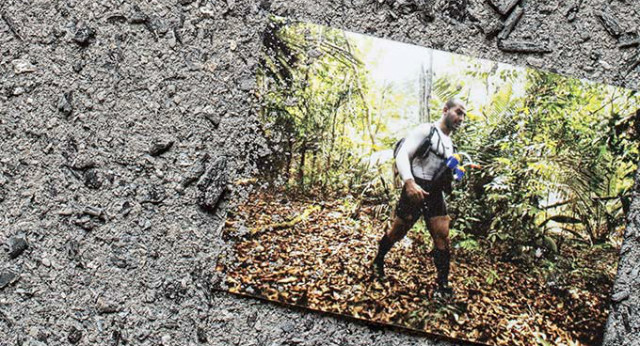
4
Two pairs of identical twins mismatched in a hospital happen upon each other more than 20 years later.
6
When he was 2, Strider was severely beaten by his mother’s boyfriend. Today, at 6, Strider lives with his grandparents in rural Maine, in and out of poverty, trying to make it.

7
Thirty-three years ago, a Chicago man was sentenced to death for murder. In 1999, another man confessed to the crime. Today, they are both free.
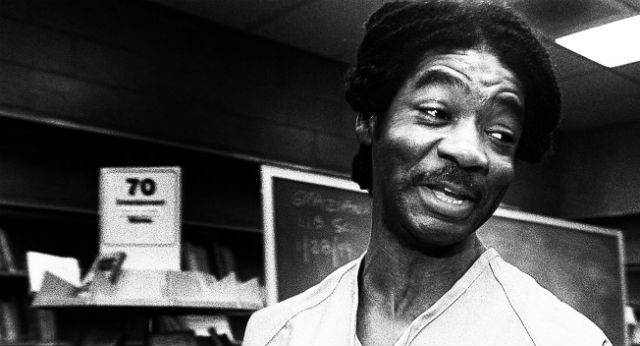
8
The disappearing women were impossible to miss, even as the country succumbed to one of the worst AIDS crises in Africa. But where were their missing body parts ending up?
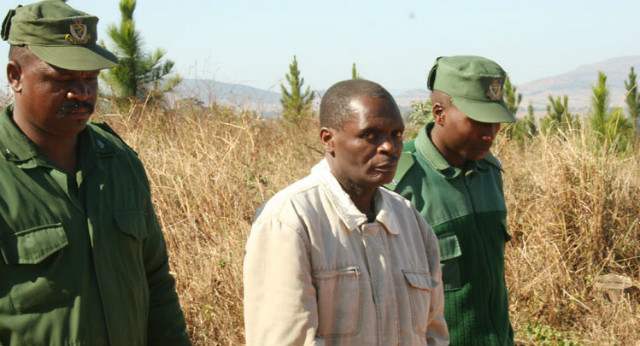
Arts & Culture
3
4
The many lives of Josh Tillman, who on the way to releasing one of the year’s best albums was “a defiant child of God, a broke dishwasher, a successful drummer, a Dionysian shaman, a failed poet, a drug-hoovering spiritualist, and a gleeful prankster.”
Business
1
Thirty-year-old payment processing CEO Dan Price made an audacious decision and was rewarded with viral stardom. But what were his real motivations?
3
Activist investor Bill Ackman set out to destroy the multilevel marketing company. But did he wind up helping it succeed instead?
4
When it comes to sweatshops and child labor, your $7 H&M gym shorts aren’t really the problem (or the solution).

Crime
3
Nathan Heller New Yorker Nov 2015
Thirty years ago, Elizabeth Haysom and Jens Soering fell in love as freshman at the University of Virginia. It was the same year Haysom’s parents were brutally murdered. Each says the other committed the crime.
Essays
1
How the author’s father wrote over 400 pieces of “pirate porn, ghost porn, science-fiction porn, vampire porn, historical porn, time-travel porn, secret-agent porn, thriller porn, zombie porn and Atlantis porn.”
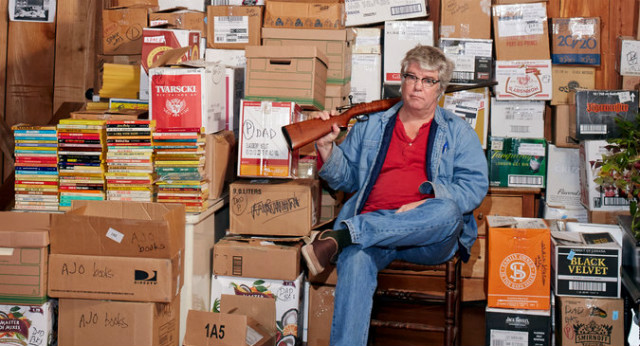
3
“What I had going for me was teen rage, contempt impervious to offers of compromise; the power of the mask capable of turning ice to marshmallow, and all the time in the world, all the ability to sustain it without surrendering.”

Food
4
It takes a gallon of water to grow a single almond. Yet in drought-ravaged California, hedge funds are racing to plant as many new trees as they can.
History
1
Gerry Adams, the leader of Sinn Fein, denies that he was ever in the IRA. The murder of Jean McConville threatened to expose him as a liar.
Media
1
He leans in, big warm smile, not wanting to correct me, but needing to: “Sorbette,” he says, like a news anchor. “It’s pronounced sorbette.”

Sports
4
How three generations of a Brazilian family evangelized for and fought over the sport of Gracie jiu-jitsu as it moved from the Amazon to Hollywood to the UFC.
Tech
3
High school dropouts are descending on San Francisco with nothing more than a backpacks full of clothes and ideas.
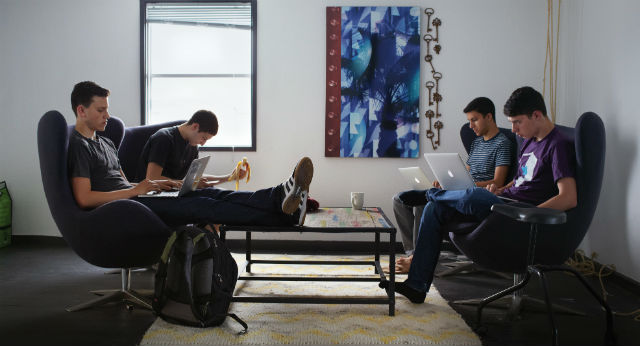
4
The transcript of chats between Silk Road boss Ross Ulbricht and a man he believed to be a Hell’s Angel who agreed to supply “hitters” to carry out 5 assassinations.
World
4
Working on the high seas is always dangerous, but the Dona Liberta has a particularly bad reputation.
Fiction
1
On the eve of their daughter’s wedding, a divorced couple is confused by old feelings despite sexual identities.
3
4
Interactions and complications ensue at a Seattle wedding.
5
A story of the very complicated demographics of small-town life.
Readers' Poll
8
Most Clicked
Subscribe to:
Posts (Atom)
Featured Posts
Popular Posts
-
IN A POST entitled “ Machine Learning: Bane or Blessing for Mankind? ,” I noted that the renowned theoretical physicist Stephen Hawkin...
-
As the world of total contradictions we are all living in continues to get more surreal by the day, we learn in the 1st video below fro...
-
Kit Car Manufacturers, Builders & Dealers The Kit Car List of kitcar manufacturers includes over 750 different manufacturers, builde...
-
*A gift to my clients and those lacking SEO skills. Free Search Engine Submission Websites 2015 Best Free Search Engine Submissi...
-
Sex is an important aspect of every relationship – sometimes even more important than we would dare to admit. Are you with me on that?...
-
Updated by Gavin Phillips on 04/15/2017 In home networks, IP addresses aren’t usually fixed, but they do fall within specific ranges...
-
Recent security breaches have heightened our awareness of cybersecurity issues. The Staples hack and other security breaches have r...
-
The software development industry continues its relentless march forward. In 2016 we saw new releases of popular languages, framewor...
-
Do it all in one location. Open an account























